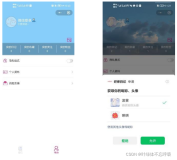一、设备信息检测
通过分析User-Agent请求首部(如下图红线框出的部分),可以得到相关的设备信息。
Piwik系统专门有一套代码用来分析代理信息,还独立了出来,叫做DeviceDetector。它有一个专门的demo页面,可以展示其功能,点进去后可以看到下图中的内容。
它能检测出浏览器名称、浏览器的渲染引擎、浏览器的版本、设备品牌(例如HTC、Apple、HP等)、设备型号(例如iPad、Nexus 5、Galaxy S5等)、设备类别(例如desktop、smartphone、tablet等),这6类数据中的可供选择的关键字,可以参考“List of segments”或插件的“readme”。顺便说一下,Piwik还能获取到访客的定位信息,在“List of segments”中,列举出了城市、经纬度等信息,其原理暂时还没研究。
Piwik为大部分设备信息的关键字配备了一个icon图标,所有的icon图标被放置在“plugins\Morpheus\icons”中,包括浏览器、设备、国旗、操作系统等,下图截取的是浏览器中的部分图标。
二、IP地址
在Piwik系统的后台设置中,可以选择IP地址的获取方式(如下图所示)。在官方博客的一篇《Geo Locate your visitors》博文中提到,3.5版本后可以在系统中嵌入MaxMind公司提供的IP地理定位服务(GeoIP2)。
下面是一张看官方的产品介绍表,从描述中可看出这是一项非常厉害的服务。不过需要注意的是,这是一项付费服务。
三、日志数据和归档数据
在官方发布的说明文档《How Matomo (formerly Piwik) Works》中提到,在Piwik中有两种数据类型:日志数据和归档数据。日志数据(Log Data)是一种原始分析数据,从客户端发送过来的参数就是日志数据,刚刚设备检测到的信息也是日志数据,还有其它的一些日志数据的来源,暂时还没细究。由于日志数据非常巨大,因此不能直接生成最终用户可看的报告,得使用归档数据来生成报告。归档数据(Archive Data)是以日志数据为基础而构建出来的,它是一种被缓存并且可用于生成报告的聚合分析数据。
日志数据会通过“core\Piwik\Tracker\Visit.php”中的方法保存到数据库中,其中核心的方法如下所示,注释中也强调了该方法中的内容是处理请求的主要逻辑。该方法涉及到了很多对象,以及对象的方法,错综复杂,我自己也没有研究透,只是利用PHPStorm编辑器自动索引,查找出了一些关联,具体细节还有待考证。
/** * Main algorithm to handle the visit. * * Once we have the visitor information, we have to determine if the visit is a new or a known visit. * * 1) When the last action was done more than 30min ago, * or if the visitor is new, then this is a new visit. * * 2) If the last action is less than 30min ago, then the same visit is going on. * Because the visit goes on, we can get the time spent during the last action. * * NB: * - In the case of a new visit, then the time spent * during the last action of the previous visit is unknown. * * - In the case of a new visit but with a known visitor, * we can set the 'returning visitor' flag. * * In all the cases we set a cookie to the visitor with the new information. */ public function handle() { foreach ($this->requestProcessors as $processor) { Common::printDebug("Executing " . get_class($processor) . "::manipulateRequest()..."); $processor->manipulateRequest($this->request); } $this->visitProperties = new VisitProperties(); foreach ($this->requestProcessors as $processor) { Common::printDebug("Executing " . get_class($processor) . "::processRequestParams()..."); $abort = $processor->processRequestParams($this->visitProperties, $this->request); if ($abort) { Common::printDebug("-> aborting due to processRequestParams method"); return; } } $isNewVisit = $this->request->getMetadata('CoreHome', 'isNewVisit'); if (!$isNewVisit) { $isNewVisit = $this->triggerPredicateHookOnDimensions($this->getAllVisitDimensions() , 'shouldForceNewVisit'); $this->request->setMetadata('CoreHome', 'isNewVisit', $isNewVisit); } foreach ($this->requestProcessors as $processor) { Common::printDebug("Executing " . get_class($processor) . "::afterRequestProcessed()..."); $abort = $processor->afterRequestProcessed($this->visitProperties, $this->request); if ($abort) { Common::printDebug("-> aborting due to afterRequestProcessed method"); return; } } $isNewVisit = $this->request->getMetadata('CoreHome', 'isNewVisit'); // Known visit when: // ( - the visitor has the Piwik cookie with the idcookie ID used by Piwik to match the visitor // OR // - the visitor doesn't have the Piwik cookie but could be match using heuristics @see recognizeTheVisitor() // ) // AND // - the last page view for this visitor was less than 30 minutes ago @see isLastActionInTheSameVisit() if (!$isNewVisit) { try { $this->handleExistingVisit($this->request->getMetadata('Goals', 'visitIsConverted')); } catch(VisitorNotFoundInDb $e) { $this->request->setMetadata('CoreHome', 'visitorNotFoundInDb', true); // TODO: perhaps we should just abort here? } } // New visit when: // - the visitor has the Piwik cookie but the last action was performed more than 30 min ago @see isLastActionInTheSameVisit() // - the visitor doesn't have the Piwik cookie, and couldn't be matched in @see recognizeTheVisitor() // - the visitor does have the Piwik cookie but the idcookie and idvisit found in the cookie didn't match to any existing visit in the DB if ($isNewVisit) { $this->handleNewVisit($this->request->getMetadata('Goals', 'visitIsConverted')); } // update the cookie with the new visit information $this->request->setThirdPartyCookie($this->request->getVisitorIdForThirdPartyCookie()); foreach ($this->requestProcessors as $processor) { Common::printDebug("Executing " . get_class($processor) . "::recordLogs()..."); $processor->recordLogs($this->visitProperties, $this->request); } $this->markArchivedReportsAsInvalidIfArchiveAlreadyFinished(); }
最后了解一下Piwik的数据库设计,此处只分析与日志数据和归档数据有关的数据表。官方的说明文档曾介绍,日志数据有5张相关的数据表,我对于表的内在含义还比较模糊,因此下面所列的描述还不是很清晰。
(1)log_visit:每次访问都会生成一条访问者记录,表中的字段可参考“Visits”。
(2)log_action:网站上的访问和操作类型(例如特定URL、网页标题),可分析出访问者感兴趣的页面,表中的字段可参考“Action Types”。
(3)log_link_visit_action:访问者在浏览期间执行的操作,表中的字段可参考“Visit Actions”。
(4)log_conversion:访问期间发生的转化(与目标相符的操作),表中的字段可参考“Conversions”。
(5)log_conversion_item:与电子商务相关的信息,表中的字段可参考“Ecommerce items”。
归档数据的表有两种前缀,分别是“archive_numeric_”和“archive_blob_”,表的字段可参考“Archive data”。通过对字段的观察可知,两种最大的不同就是value字段的数据类型。archive_numeric_* 表中的value能储存数值(数据类型是Double),而archive_blob_* 表中的value能储存出数字以外的其他任何数据(数据类型是Blob)。
两种表都是动态生成的,因此前缀的后面都用“*”表示。生成规则可按年、月、周、天或自定义日期范围,不设置的话,默认是按月计算,例如archive_numeric_2018_09、archive_blob_2018_09。






